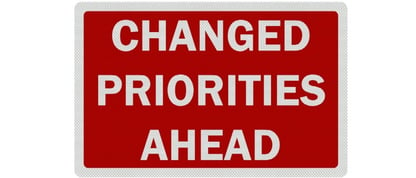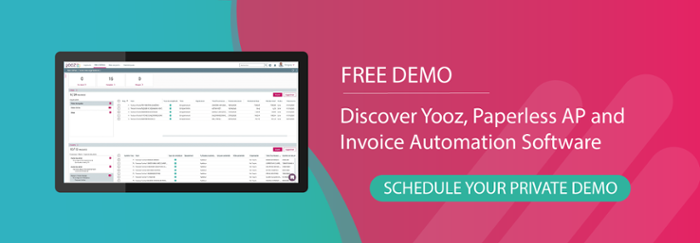Within organizations, financial projections and sales forecasts outline how much profit an organization is expected to make each week, fortnight, month, quarter, or year. When financial predictions are made, the relevant teams then outline and allocate budgets for specific departments.
In a bid to reduce the risk of business losses, organizations complete variance analyses. If you own a start-up or plan to launch a new business, familiarizing yourself with variance analysis and the different types of budget variance is important. To assist you, we share a guide to variance analysis, what causes budget variance, the different types, and how combining accounting and technology can help throughout the entire process.
What is Budget Variance?
Budget variance is a noticeable difference between a budget or spending forecast and the actual sum of money spent or received. For example, an organization may allocate $2,000 for a business expense, such as delivery costs, per month. This budget ensures that there are funds available to pay vendors for delivering any products purchased.
However, at the end of the month, quarter, or financial year, the organization may become aware that they have actually spent $2,500 each month on delivery costs. Due to spending more than was budgeted for on delivery, a $500 budget variance is noticed, highlighting a difference between the projected budget and the actual amount paid.

What Causes Variances?
We've now established that a budget variance is experienced when an organization spends more money than is allocated for a particular service. But how can this occur when sales forecasts are thorough?
Well, when it comes to costs associated with business, it’s common to have variable prices. These costs commonly apply to delivery, shipping, supplies, and materials with costs fluctuating when a company faces higher demands. For example, the more sales your organization experiences, the more money you’ll need to spend on shipping the products. You may even need to purchase more supplies or ask your employees to work extra hours to ensure all the orders are processed and dispatched.
With this rise in sales comes an increase in spending. If you don't anticipate this increase, it’s unlikely that you’ll have budgeted for the additional costs in your sales forecast. As a result, you’ll incur a budget variance between the money set aside for delivery and the actual figure you spend.
Budget variances are also noticeable in an organization when the amount spent is less than in the allocated budget. For example, if your organization allocates $5,000 for supplies but only spends $4,000 one month, the budget variance is $1,000. Fortunately, unlike the previous example, this is a positive number!
Are There Different Types?
There are two different types of budget variance: positive and negative. Negative budget variances – or adverse budget variances as they are otherwise known – mean a business loses money. Negative variances can occur for several different reasons, such as:
- Poor financial projections,
- Reduction in sales,
- Incorrect data inputs or human errors,
- Increases in costs that directly impact how much an organization needs to spend to operate,
- External factors beyond an organization's control, including political, economic, and social changes,
- Internal changes, such as hiring new employees.
In contrast, a positive budget variance – or a favorable budget variance – is the variance organizations encounter when revenue exceeds outgoings. This happens when income is higher than the initial forecast, leading to an increase in turnover. Examples of when positive variances commonly occur include:
- When organization spends less than it initially expected on supplies,
- Costs associated with business operations, such as shipping, are lower than originally forecasted,
- Businesses see an increase in revenue, meaning that profit is greater than what was expected.
As you can see, budget variances are frequently caused by external factors. Why? External factors are constantly changing and can significantly impact any business. For this reason, most organizations implement flexible budgets rather than fixed budgets.
Flexible budgets consider the many factors influencing revenue and make financial projections based on these. Unlike fixed budgets, flexible budgets can be modified throughout the year to reflect accurate costs of materials and overheads.
How Do You Figure Out What Caused The Difference?
Analyzing the actual budget variance can be done in a few different ways. If you rely on manual processes, your financial and accounting department will be responsible for analyzing budget variance and the data influencing this. However, there’s always a risk of human error when manually inputting and analyzing information.
To increase accuracy, more organizations are taking advantage of technology, such as our Yooz automation software. Our software automates the processing, analyzing, and storing of data that determine actual versus budget variance via customizable reports.
Because the process is both quicker and more exact, it creates far more accurate data and therefore improved insight and guidance into the cause of the budget variance. This in turn helps organizations quickly forecast future spending based on actual previous outcomes.

How Does A Budget Variance Affect Company Policies?
The main way in which budget variances impact companies is that they affect the amount of money available to allocate for various activities. When a budget variance means reduced funds, companies may need to adjust their plans and take measures such as cutting spending on certain projects or activities to remain in compliance with their budget. This can mean having to reduce or delay investments in certain areas, such as research and development, marketing campaigns, and other initiatives.
In addition to reducing spending in certain areas, budget variance can also lead companies to develop new strategies for generating revenue. For example, they may need to focus on cost-cutting measures or find new ways of maximizing profits.
A positive budget variance, on the other hand, may lead to increased investments in certain activities or allow for new initiatives such as employee bonuses or new product development. Companies may also be able to invest more money into areas such as research and development, marketing campaigns, employee training programs, and other initiatives that are vital for the company’s success. They may also require employees to work additional hours. However, to adhere to the Fair Labor Standards Act, organizations must pay employees at least one and one-half times pay for every hour they work over the standard 40-hour week.
For these reasons, when analyzing actual versus budget variance, it’s essential to determine why either a negative or positive variance has transpired. By examining the cause of negative variances, your organization can review changes to supplier costs or economic factors that could continue to have an impact. You can create new budgets and forecasts to reflect potential changes to ensure greater efficiency.
Likewise, determining the cause of positive variances is beneficial. In doing this, you can ascertain whether you could spend more money while maintaining a positive variance to that sustains improved turnover in the next financial period.
How Do You Get The Numbers?
Calculating the value of a budget variance follows a simple formula: subtract the total sum spent from the budget set aside for a specific business operation. So, if the budget allocation is $5,000 and the amount spent is $5,500, you subtract $5,500 from $5,000, which reveals a negative budget variance of -$500, or a 10% loss.
The same goes for positive budget variances. If your budget for marketing, for example, is $4,000, but you only spend $3,000, you subtract $3,000 from $4,000, which reveals a positive variance of $1,000 or 25%.
To Conclude
Variance analyses are crucial for monitoring profitability during the financial year. If your organization manually completes these analyses, you risk error resulting from both current and past miscalculations.
This is where the combination of accounting and technology can help, specifically by automating the Accounts Payable (AP) process. Automation offers numerous benefits, and, with greater data accuracy and real-time reporting, you'll have more time for proactive management and implementing innovation.
Ready to find out more about how our automation software solutions can support your organization?







